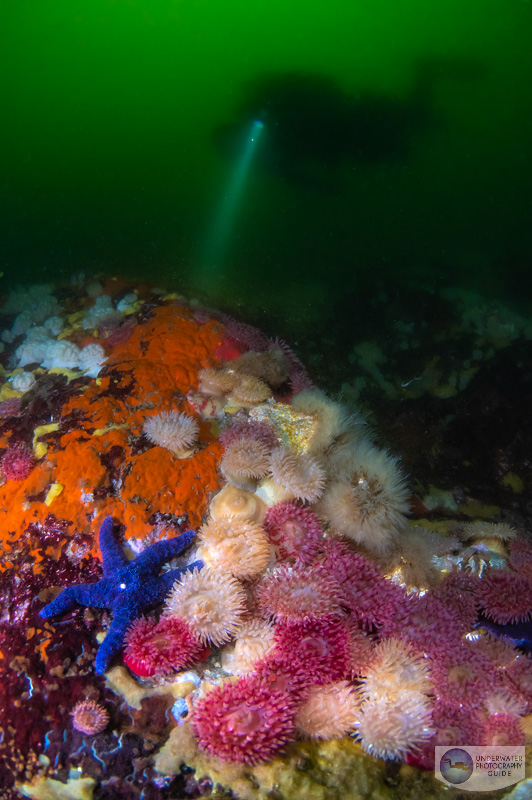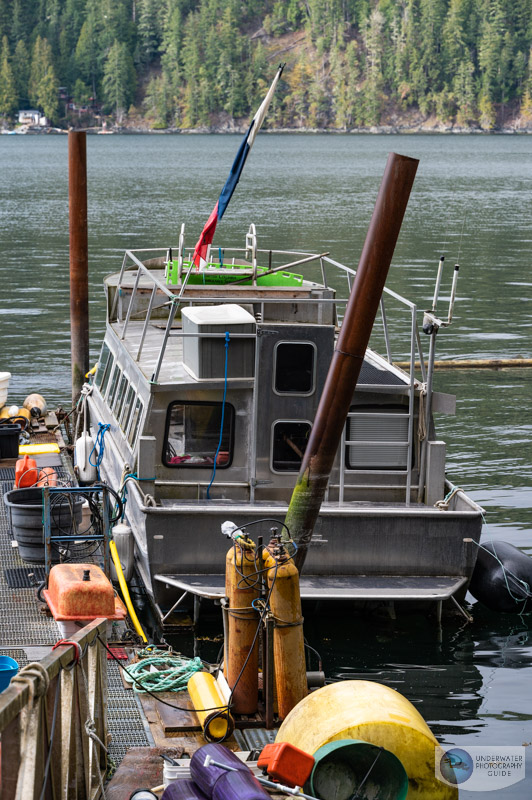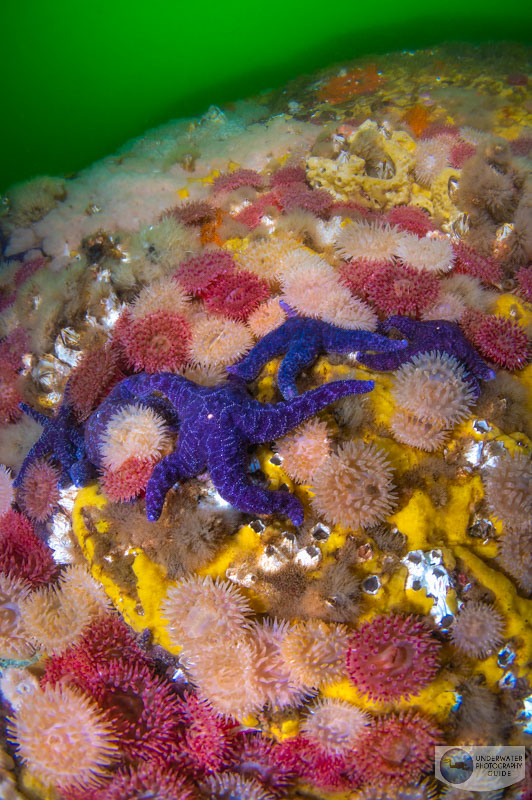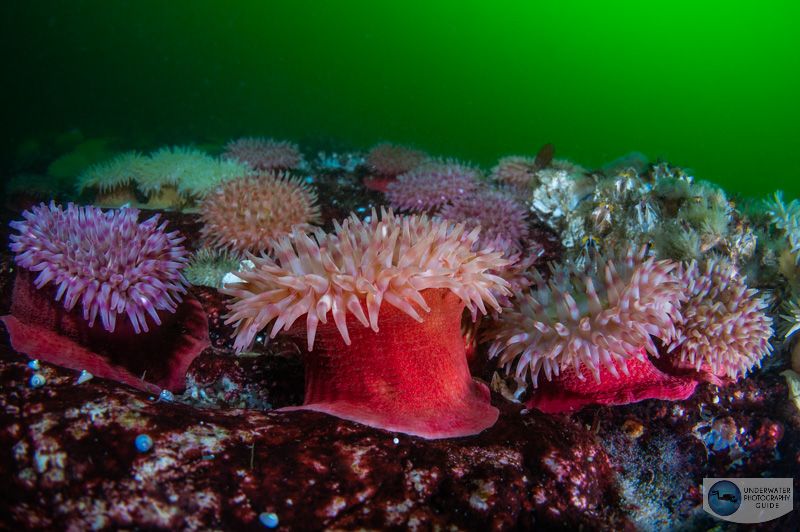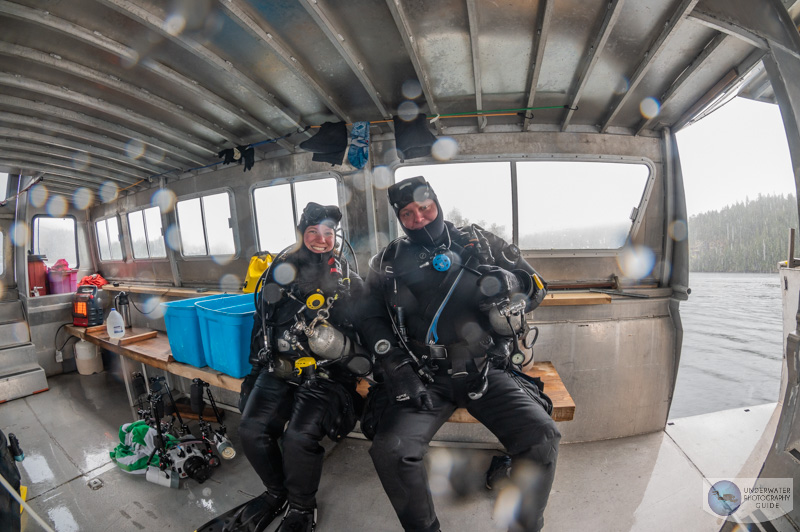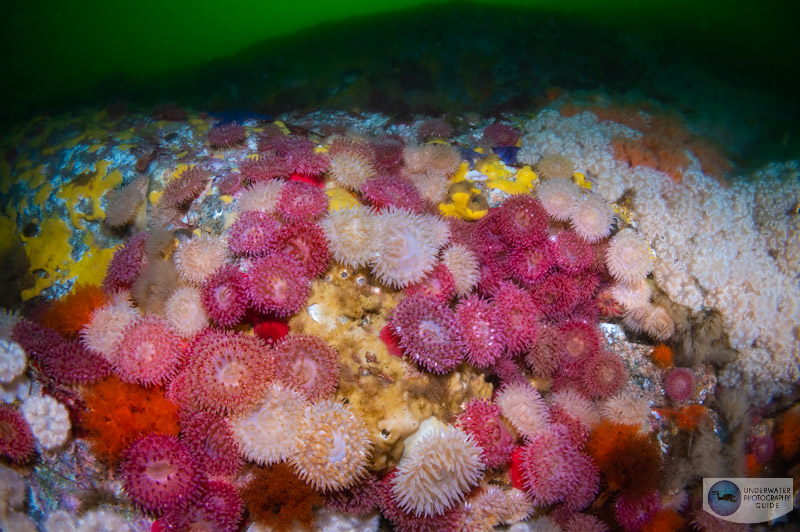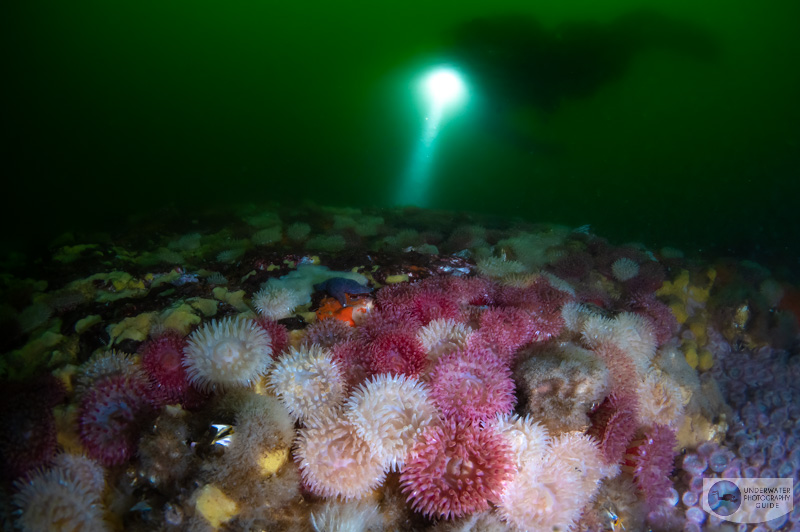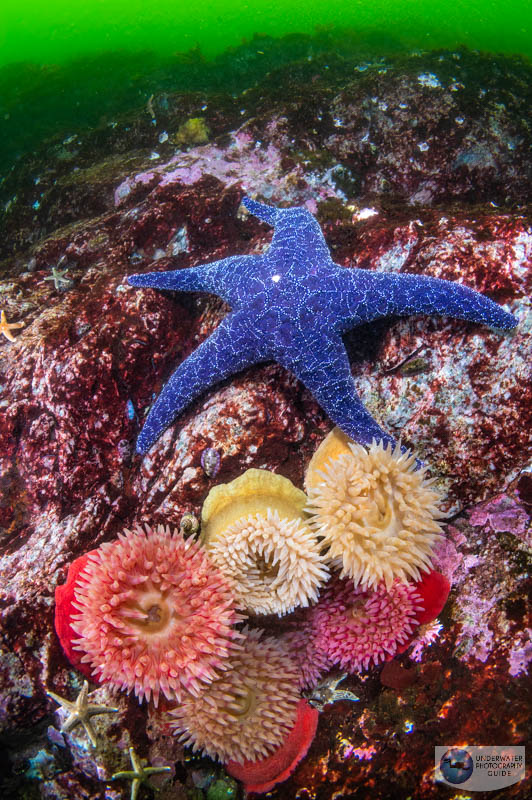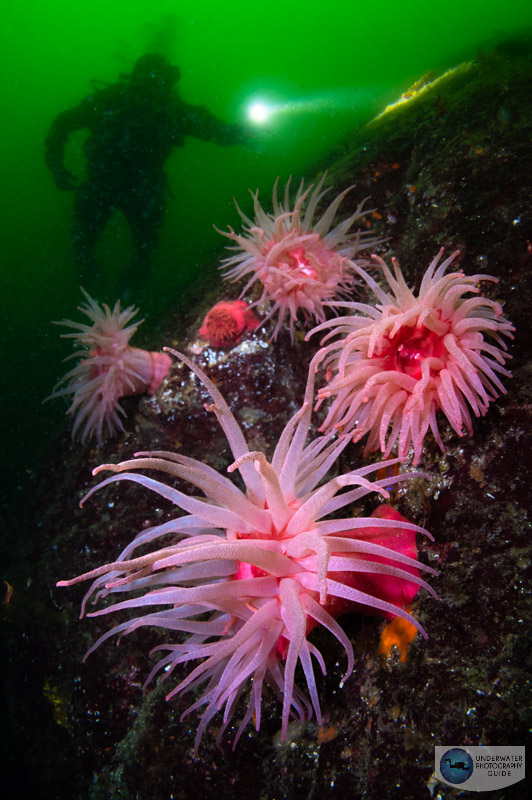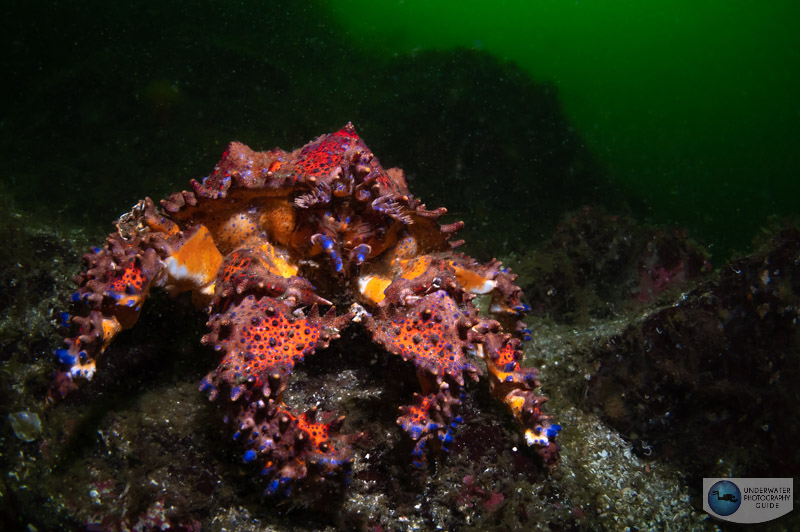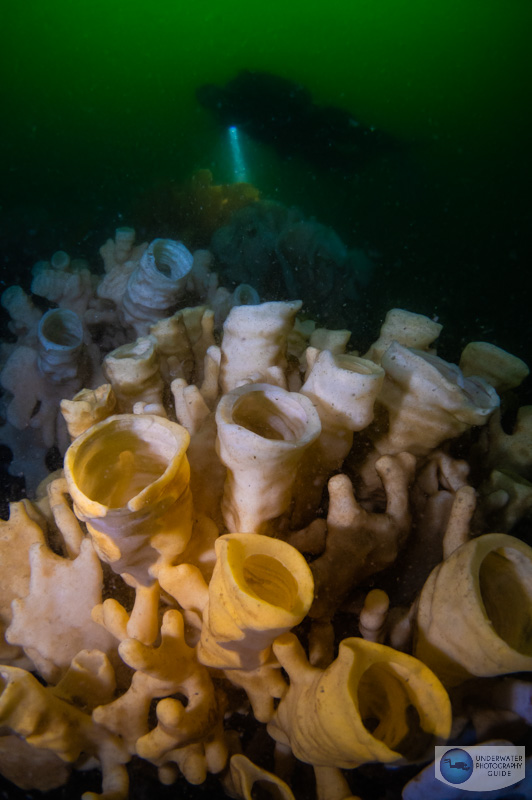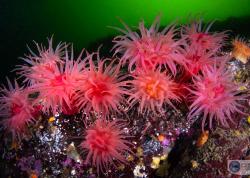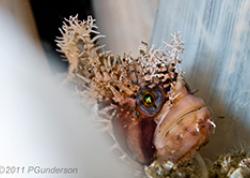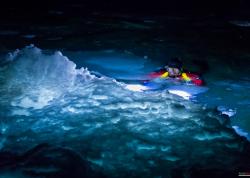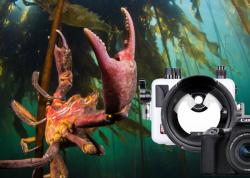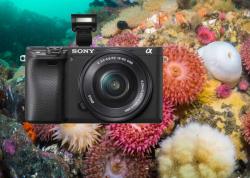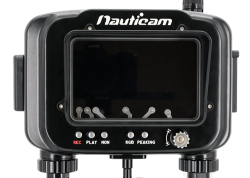Diving the World's Fastest Tidal Current
The Skookumchuck Narrows, or the "Skook" as it is commonly known among divers, is a narrow channel of water in the Salish Sea just north of Vancouver, Canada. Because the inlet is so shallow and narrow, a single tide can force 200 X 10^9 gallons of water through the narrows. Such a massive movement of water produces standing waves, whirlpools, whitecaps, and currents up to 16 knots (i.e., 30 km/h or 18 mph). Many believe that it is tied with Nakwakto Rapids as the fastest tidal rapids in the world. Clearly a great spot for a dive, right?
Right! Though such conditions might seem like a recipe for drowning, on the right tidal exchange a scuba diver can slip in between the change in tides as the water changes direction. It's essential to pick a date where the difference between high tide and low tide is small enough that the currents might only be 4-5 knots on either end of slack. Moreover, it can be quite rare for this perfect tidal exchange to land at a time of day where there is enough light to pierce the silty, green water. In this case, April, 2023 proved to have a couple of those rare days, the first time in four years! Such a dive must be done via live boat with an experienced captain - that is, Porpoise Bay Charters in Egmont, BC, Canada - a family run business owned by Kal Helyar and Ann Beardsell.
Currents = Life
It's not the adrenaline that attracts the intrepid diver to this remote part of British Columbia, it's the life. Ocean currents tend to supercharge the flow of nutrients to marine life. The faster the current, the more nutrients can be transported over a given area. This can turn places like the Skookumchuck narrows into oases of life, in an already prolific marine ecosystem.
But even for a fish 16 knots is ripping. Only creatures with a low profile can get enough traction on the steep rock faces of the channel to keep from blowing off. Anything that hangs more than a few inches off the rocky wall will be ripped away. The resulting mosaic is a tapestry of anemones, sea stars, encrusting sponges, and small fish of every color of the rainbow. Yet in some places, all that is left is sheer rock - for the life has been, quite literally, sand blasted away by back eddies, whirlpools, and fast moving water.
The Drop
As Kal looked at his watched and turned our vessel towards the famous Skook rapids, there was a tinge of apprehension in the air. These cold water, high current dives are the Everest of scuba diving. Even if we're not in the water during the full fury of the narrows, the skook is unpredictable and currents can take you in any direction. The boat exuded an aura of comfortable caution - a feeling that the collective experiences of a salty old group of divers can bring.
Kal smiled at us reassuringly. "Some say it's a toilet bowl, but if it's a toilet bowl you're doing it wrong," he quipped. "We only go in the water when it's an easy drift in the current." We approached the wall at the narrowest point of the channel, where the current is fastest. Kal's eyes darted around the landscape looking for the telltale signs of slack tide. Tidal ripples slowed like clockwork and turned to patchwork glass. We had entered the best few minutes in the next year to see the skook in all its glory under the sunshine.
We quickly geared up and dropped into the water, wasting no time at the surface. Alas, there was no sunshine for a spring time algal bloom covered us with a dark green ethereal haze. But beneath the fog there was a plethora of color - from bright red and pink anemones to neon orange encrusting sponges to deep purple ochre sea stars. The colors were interwoven in large patches as colonial animals fought for space on the limited rockface.
Becoming One with Current
As we descended and reached the outer edge of the wall face, we could begin to feel the strong river of a tide that had not yet subsided. Knowing that in a few minutes it would change direction, we gently grasped rock holds, reminiscent of underwater rock climbing, and kicked into the current to keep ourselves in place. This resulted in a net zero gain in distance - which was perfect for setting up cameras in the dark water. I immediately shifted my ISO to 2500 in order to get a nice emerald background in my photos while still maintaining a semblance of a shutter speed high enough to freeze my subjects.
As the current began to slow, we kicked between different overlapping slabs of rock at the top of the wall. Short metridium anemones turned into painted anemones and then sea stars and encrusting sponges over the areas hardest hit by current.
After twenty minutes, we could feel the speed of the water increasing from a gentle breeze to a steady flow. It felt as if we were on the beginning of a roller coaster getting ready for the drop. It no longer became possible to remain stationary, no matter how hard we kicked. So we got neutrally buoyant and let the current do the work bringing us along the wall. As boulders jutted out from the main rock face, the occasional back eddy would turn us around or push us up or down for a couple feet. But with neutral buoyancy and confidence that Kal would pick us up at the end of the ride, we knew we were completely safe.
After a couple minutes of flowing over incredible colors and life, the current turned and abruptly slowed down. We entered a shallow cove of dozens of green urchins and the dive was over.
Top Underwater Photo Tips for Diving in Fast Current
Here are a few of the top photo tips for diving in fast current that I learned while diving in the Skook.
1. On flat substrate with high current, get low. On walls with high current, hide behind a rock or outcrop.
If you experience a fast current on flat bottom, get as low to the bottom as possible to reduce your profile (like an anemone). If you are on a wall, outcroppings or large boulders can provide a break in the current. Hide on the leeward side of the structure.
2. Use two fingers to steady yourself on a rock
It's better to hold on to a rock to steady yourself than to not touch the bottom and accidentally crash into the reef.
3. Find a spot without current to pre-set your settings and strobe positions
Look at where the sun is and set up your camera settings/strobes before entering an area with fast current. You will need an extra appendage to help you navigate so it's best not to be adjusting camera settings.
4. Bring a light and keep an eye on your buddy
Current can often bring silt and ocean nutrients with it. Make sure you know where your buddy is at all times and bring a light so that you can signal to them when necessary.
5. Keep Calm and Breathe
Buoyancy is key to being able to navigate currents. Upwellings and downwellings will do everything they can to mess up your buoyancy. So keep calm, breathe, and adjust your buoyancy often.
RECOMMENDED ARTICLES
SUPPORT THE UNDERWATER PHOTOGRAPHY GUIDE:
The Best Service & Prices on u/w Photo Gear
 Visit Bluewater Photo & Video for all your underwater photography and video gear. Click, or call the team at (310) 633-5052 for expert advice!
Visit Bluewater Photo & Video for all your underwater photography and video gear. Click, or call the team at (310) 633-5052 for expert advice!
The Best Pricing, Service & Expert Advice to Book your Dive Trips
 Bluewater Travel is your full-service scuba travel agency. Let our expert advisers plan and book your next dive vacation. Run by divers, for divers.
Bluewater Travel is your full-service scuba travel agency. Let our expert advisers plan and book your next dive vacation. Run by divers, for divers.




